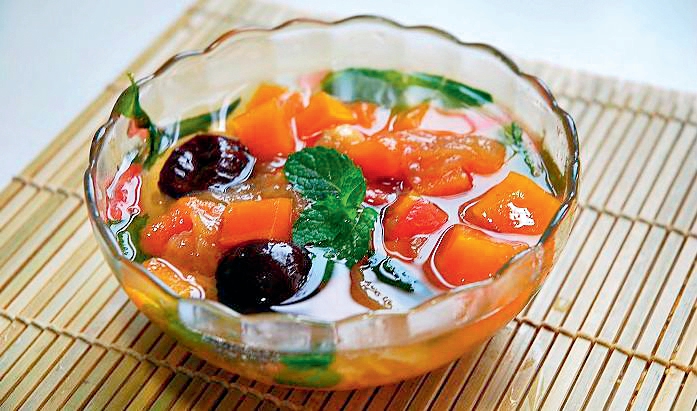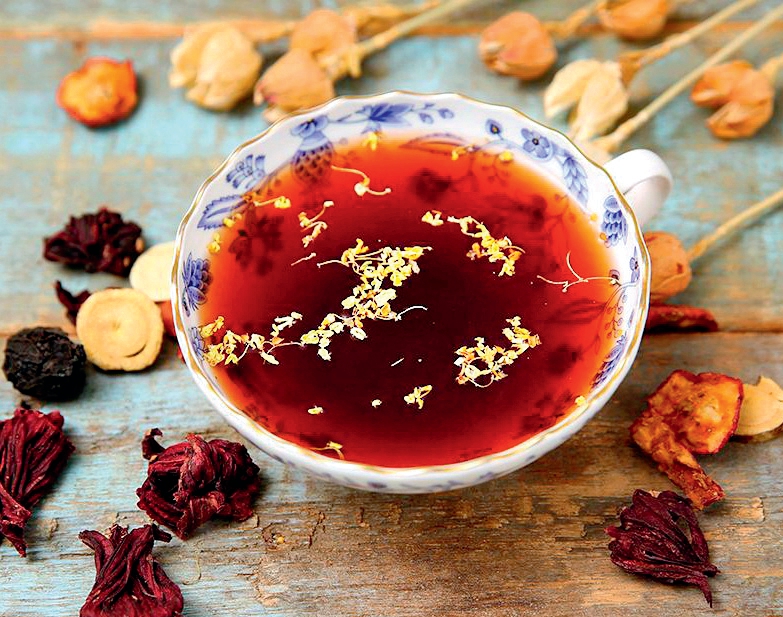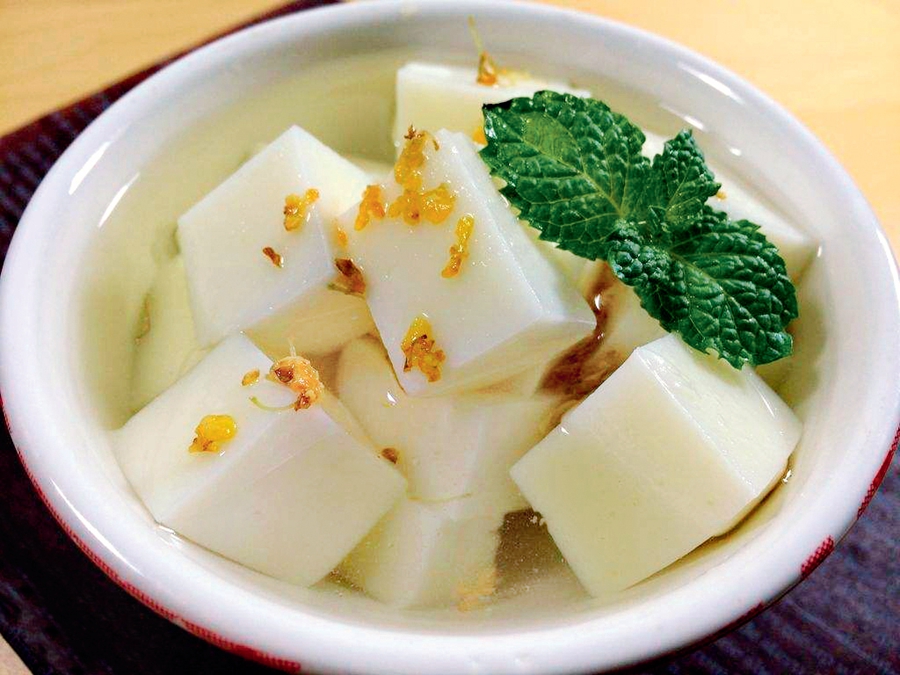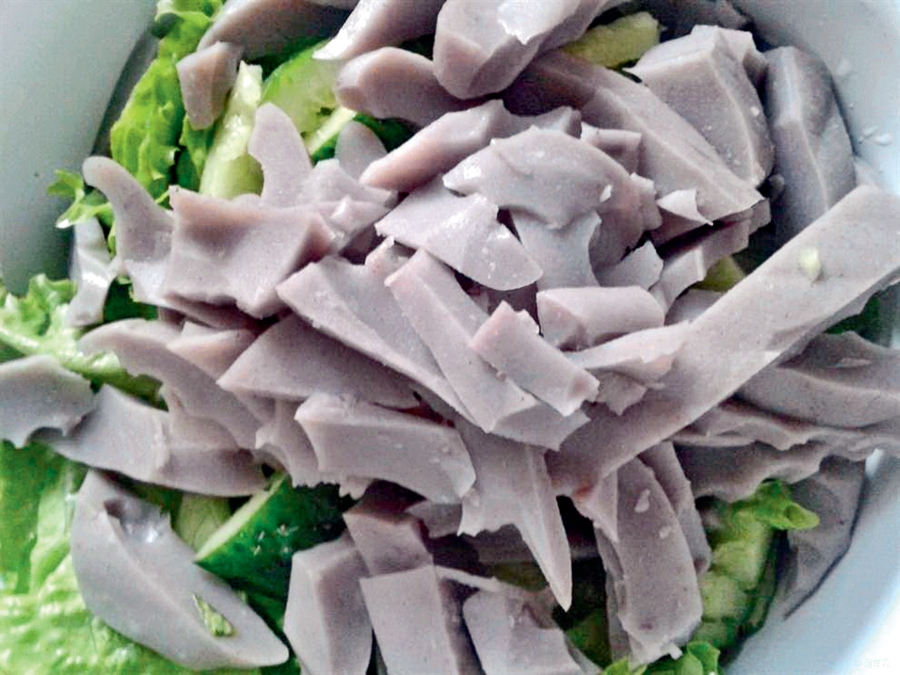By TONG CHANGYOU
THE summer solstice is one of the 24 solar terms in the Chinese lunar calendar. It is a tradition in China to eat wontons on the day of the winter solstice and noodles on the summer solstice. However, preferences and varieties of noodles differ greatly between northern and southern areas. In southern China, some favorites include plain noodles, dry noodles, noodles with shredded meat, seafood noodles, and “crossing-the-bridge” rice noodles (a noodle soup originating in Yunnan Province). In northern China, people prefer noodles with soybean paste, sesame sauce, mutton or beef. The northerners prefer to first cook the noodles, and then add a stir-fried mixture of vegetables, egg or meat onto them, adding in Chinese prickly ash oil, vinegar, sliced cucumber, sliced garlic, and sliced haricot bean. The noodles are especially delicious in the sweltering summer.
Besides noodles, there are many other famous snacks Beijing locals love to eat in the summer.

Ice Bowl
This food became a staple of Beijing snacks during the Qing Dynasty (1644-1911), and was once a popular summer snack served on the Lotus Market by the Shicha Lake in central Beijing. Peddlers used to sell ice bowls from the Dragon Boat Festival in early May until the Mid-autumn Festival in late September. The process of making an ice bowl is relatively simple. Ingredients such as sliced lotus root, lotus seeds, walnuts, almonds, water chestnuts, and gorgon fruits are all marinated in sugary syrup and then added onto a lotus leaf laid on a large blue-and-white porcelain plate or simply in a glass bowl. Ice cubes are placed on top to combat the summer heat.

Plum Syrup
This is a traditional summer beverage in Beijing. One of the most famous and time-honored brands to make this drink is Xinyuanzhai, established in 1740, the fifth year of Emperor Qianlong’s reign in the Qing Dynasty. Ingredients include black plums, dried hawthorn slices, dried tangerine peel, licorice, brown sugar, and greengage. They are tossed into a big pot and boiled together until they condense into a liquid. The drink is especially popular in summer because it can help produce saliva, quench thirst, as well as clear away inner heat and detoxify the body.

Almond Jelly
With its white jade color and sweet and smooth taste, this is one of Beijing’s most famous desserts. It used to be served in the imperial court and was one of the four sweet dishes of the Manchu Han Imperial Feast. The preparation is simple. Prepare 200 g almond juice, 200 g milk, 4 g agar, and some brown sugar. Boil the agar in a pot until it is melted, add the almond juice and milk, stir evenly and pour into a container, then place it into the refrigerator. Boil the brown sugar and water to make syrup and cool it in the refrigerator too. When the dish is served, cut the almond jelly into cubes and add the cooled syrup, garnishing with diced watermelon or mango.

Buckwheat Cake and Bean Jelly
Use buckwheat powder to make a soft dough, steam it, and let it cool in the refrigerator. Slice the dough and add some sesame sauce, soy sauce, vinegar, mustard, sliced cucumber, and salted radish, or chilli oil.
Bean jelly is made of mung bean starch, which is stirred evenly with water and then made into the dough. Cut it into bulks, strips, or fishlike shapes. The crystal and translucent jelly can be served with the same seasonings as what the buckwheat cake is garnished with.





